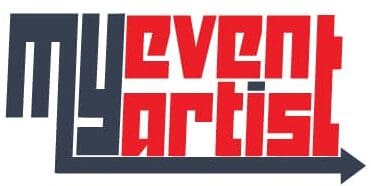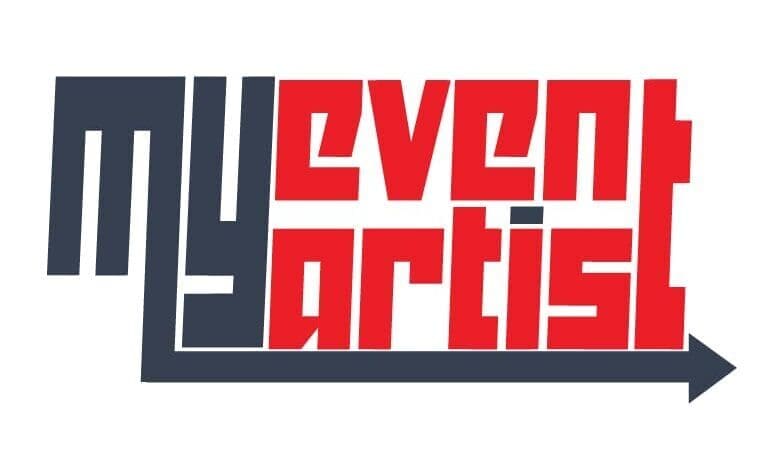Collaborating effectively with clients on logo designs is essential to ensuring that the final product resonates with their brand identity and meets their expectations. Adobe Illustrator, as one of the leading graphic design tools, provides various features that facilitate smooth communication and collaboration throughout the design process.
At My Event Artist, we specialize in helping sports teams and events establish their identities through custom logo designs. This guide will explore effective strategies for collaborating with clients on logo designs using Adobe Illustrator, from initial discussions to final delivery.
Understanding the Importance of Client Collaboration
1. Aligning Goals and Vision
Effective collaboration ensures that the designer and the client share the same vision for the project. Understanding the client’s goals, preferences, and target audience allows for more relevant design outcomes.
2. Building Trust and Rapport
A collaborative approach builds trust and fosters positive relationships between the designer and the client. This trust leads to better communication and more open feedback.
3. Ensuring Satisfaction
Involving clients in the design process helps ensure that the final logo design meets their expectations, increasing the likelihood of client satisfaction and repeat business.
Step-by-Step Guide to Client Collaboration in Illustrator
Step 1: Initial Consultation and Briefing
- Schedule a Meeting: Arrange a meeting (in person or online) to discuss the project scope, objectives, and timeline. This is crucial for gathering critical information.
- Ask Detailed Questions: Inquire about:
- The brand’s mission and values
- Target audience
- Competitors and market positioning
- Desired style (modern, vintage, minimalist, etc.)
- Color preferences and existing branding elements
Step 2: Create a Design Brief
- Summarize the Discussion: After your initial consultation, draft a design brief summarizing key points discussed during the meeting. This document serves as a roadmap for the project and should cover:
- Project objectives
- Key attributes of the brand
- Timeline and deliverables
- Seek Approval: Share the design brief with the client for feedback and approval. This ensures everyone is aligned before the design process begins.
Step 3: Begin the Design Process
- Open Adobe Illustrator: Start a new document appropriate for logo design (e.g., 1000 x 1000 pixels) and set it to the appropriate color mode (CMYK for print, RGB for digital).
- Research and Inspiration: Gather inspiration from existing logos in the industry. Consider creating a mood board that reflects the desired aesthetic. This visual representation can help solidify concepts before diving into design.
Step 4: Develop Preliminary Logo Concepts
- Sketch Ideas: Begin sketching multiple logo concepts based on the design brief. Focus on generating creative ideas without being overly concerned about perfection at this stage.
- Create Digital Drafts: Once you have a few solid concepts, create drafts in Illustrator. Use basic shapes, typography, and colors that align with the client’s preferences outlined in the brief.
Step 5: Share Preliminary Concepts with the Client
- Prepare a Presentation: Create a simple presentation to showcase the different logo concepts. Each concept should include:
- The logo design
- A brief explanation of the thought process behind the design
- Contextual examples (mock-ups, color variations, etc.)
- Schedule a Feedback Session: Arrange a meeting or send an email to present the concepts to the client. Encourage open dialogue and constructive feedback.
Step 6: Gather Feedback and Revise
- Listen and Take Notes: During the feedback session, actively listen to the client’s comments and preferences. Take notes on specific revisions they request, including adjustments in design elements, colors, or typography.
- Request Clarification: If any feedback is vague, ask clarifying questions. It’s essential to understand the client’s perspective to implement their suggestions effectively.
Step 7: Make Revisions Based on Feedback
- Iterate on Designs: Make the necessary adjustments to the selected logos based on the client’s feedback. Use Illustrator’s powerful features to modify shapes, colors, and text easily.
- Present Revised Designs: After revising the concepts, schedule another meeting or send updated drafts to the client. This iterative process may require a few rounds of revisions to reach the desired outcome.
Step 8: Finalize the Design
- Select the Final Logo: Once the client is satisfied with a logo design, finalize the design by ensuring all elements are in order.
- Prepare Variations: Create different logo variations for various applications (full color, black and white, and grayscale). This can help the client see how their logo will work in different contexts.
Step 9: Prepare Deliverables
- Export Files: Export the final logo in multiple formats suitable for both print and web use:
- AI: Editable file for future adjustments.
- PDF: High-quality format for print.
- EPS: Ideal for vector-based applications.
- PNG: With a transparent background for web use.
- JPEG: Standard format for any digital media.
- Create a Style Guide: If appropriate, provide the client with a simple style guide that includes:
- Logo usage guidelines
- Color palette specifications
- Typography guidelines
Step 10: Follow Up After Delivery
- Client Satisfaction Check: After delivering the final files, check in with the client to ensure they are satisfied with the outcome and offer assistance for future projects.
- Request Feedback: Encourage the client to provide feedback on the collaboration process. This information can help you refine your approach for future projects.
- Ask for Referrals: If the client is satisfied, don’t hesitate to ask for referrals or testimonials, which can bolster your credibility and attract new clients.
Best Practices for Collaborating with Clients in Illustrator
1. Maintain Clear Communication
Keep clients informed during every stage of the design process. Regular updates foster trust and transparency, which can enhance the working relationship.
2. Be Open to Feedback
Embrace constructive criticism. Every piece of feedback is an opportunity for improvement and greater alignment with the client’s vision.
3. Protect Your Work
If presenting initial concepts, consider watermarking your designs to protect your intellectual property while still allowing clients to review them.
4. Use Collaborative Tools
Consider using collaborative design tools and file-sharing services (such as Google Drive or Dropbox) to enable easy feedback and access to design files, enhancing client engagement.
Conclusion: Mastering Client Collaboration for Logo Design in Illustrator
Collaborating effectively with clients on logo designs can lead to tremendous outcomes for both the designer and the client. By leveraging the capabilities of Adobe Illustrator and following the steps outlined in this guide, you can ensure a productive design process that ultimately produces logos that resonate with clients and their target audience.
At My Event Artist, we are committed to assisting brands in realizing their vision through exceptional logo designs. Explore our extensive collection of print-ready vector logo designs, customizable fonts, and more by visiting My Event Artist Shop. If you’re interested in a custom logo design tailored specifically for your event or team, feel free to reach out to us today!
Keywords: logo design collaboration, Adobe Illustrator, client communication, graphic design, branding
#logodesigncollaboration, #AdobeIllustrator, #clientcommunication, #graphicdesign, #branding


Leave a Reply